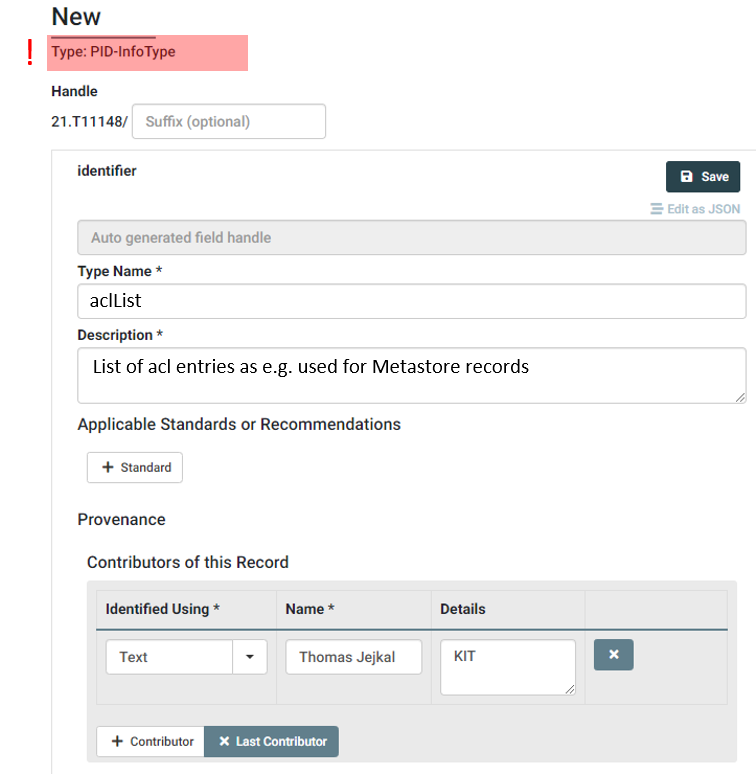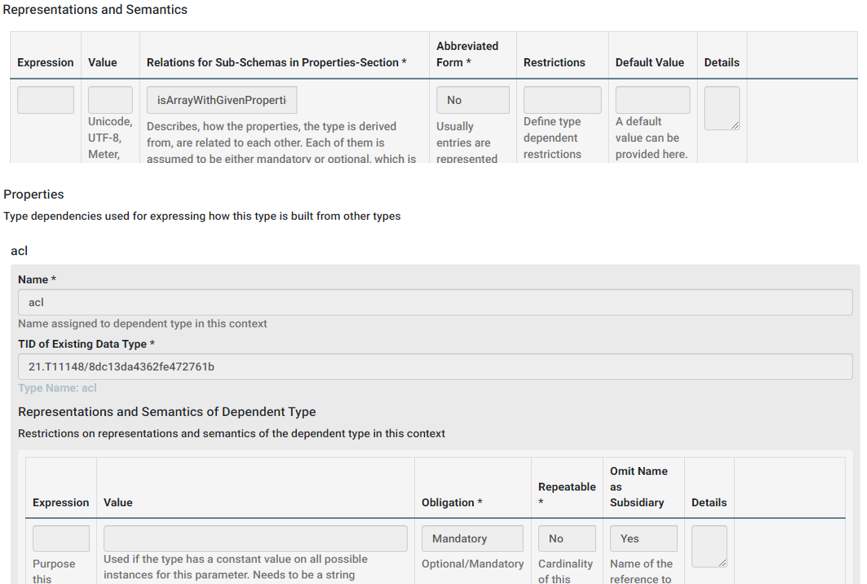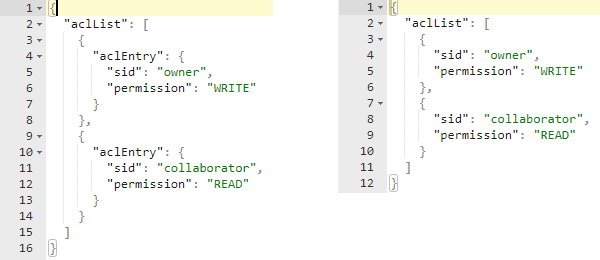3.2 Register extended Child-Data Type(s)
After registering elements of the lower hierarchy, e.g., permission and aclEntry we now proceed with the next higher level, namely the aclList Data Type. We start as before with creating a new Data Type of type PID-InfoType.

We add a Type name as well as the Contributor information as for all other Data Types. The following steps are slightly different, as you can see in the following screenshot.

First, in the Represenatations and Semantics section we add the value isArrayWithGivenProperties under Relations for Sub-Schemas in Properties-Section. This states, that the properties defined later will form an array representation in the resulting type, which is what we want for the aclList. Afterwards, we add one property, which has the Data Type of an aclEntry we've just defined. Note here, that the Data Type Name must not match the actual name of the used Data Type, which was aclEntry but can be freely chosen. However, for the Existing Data Type we use the PID of the aclEntry. In our example, we set the Obligation to Mandatory and do not allow multiple entries of aclList by setting Repeatable to No. Furthermore, we set Omit Name as Subsidiary to Yes. Please see to following example to understand the reason behind.

On the left side you see an aclList without omitting the name of subsidiaries. You can see aclEntry appearing on each child element. On the right side you see what omitting of subsidiary names does and as this is the commonly used representation of array elements, we omit the name aclEntry by setting the property. That's it, we defined our aclList Data Type and we can save it. In our case, the resulting PID is 21.T11148/8b7b3f1b796a4dc1030f which we can now add to our main checklist.
| Property | DTR Inquiry Result (Reuse, Extend, Create) |
|---|---|
| id | Reuse unicode-line-string (21.T11148/f1627ce85386d8d75078) |
| pid | Reuse identifier-general (21.T11148/38330bcc6a40ca85e5b4) |
| relatedResource | Reuse URL (21.T11148/e0efc41346cda4ba84ca) |
| createdAt | Reuse date-time-rfc3339 (21.T11148/3bfb2839a6967114bc3e) |
| lastUpdate | Reuse date-time-rfc3339 (21.T11148/3bfb2839a6967114bc3e) |
| schemaId | Reuse unicode-line-string (21.T11148/f1627ce85386d8d75078) |
| recordVersion | Reuse non_negative_integer (21.T11148/eca44a2ac007d5e126f5) |
| metadataDocumentUri | Reuse URL (21.T11148/e0efc41346cda4ba84ca) |
| documentHash | Reuse sha-checksum (21.T11148/66bf538937bf74bfc48a) |
| aclList | Create aclList (21.T11148/8b7b3f1b796a4dc1030f) |
The checklist on the top hierarchy level is now complete and we can define our final Data Type representing our envisioned structure.